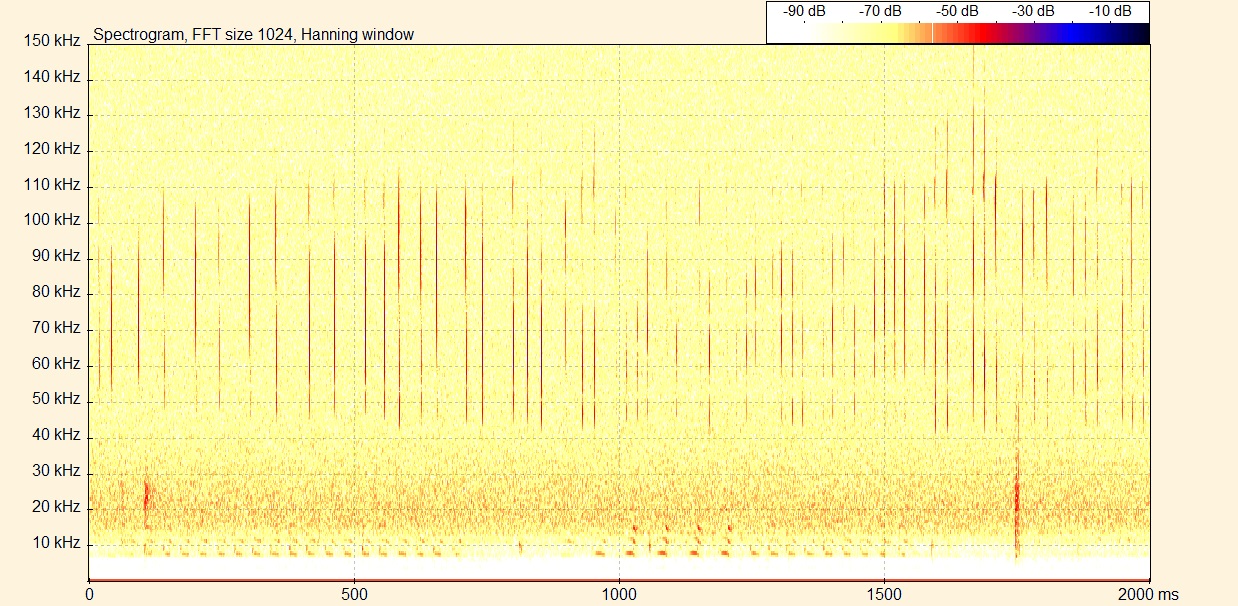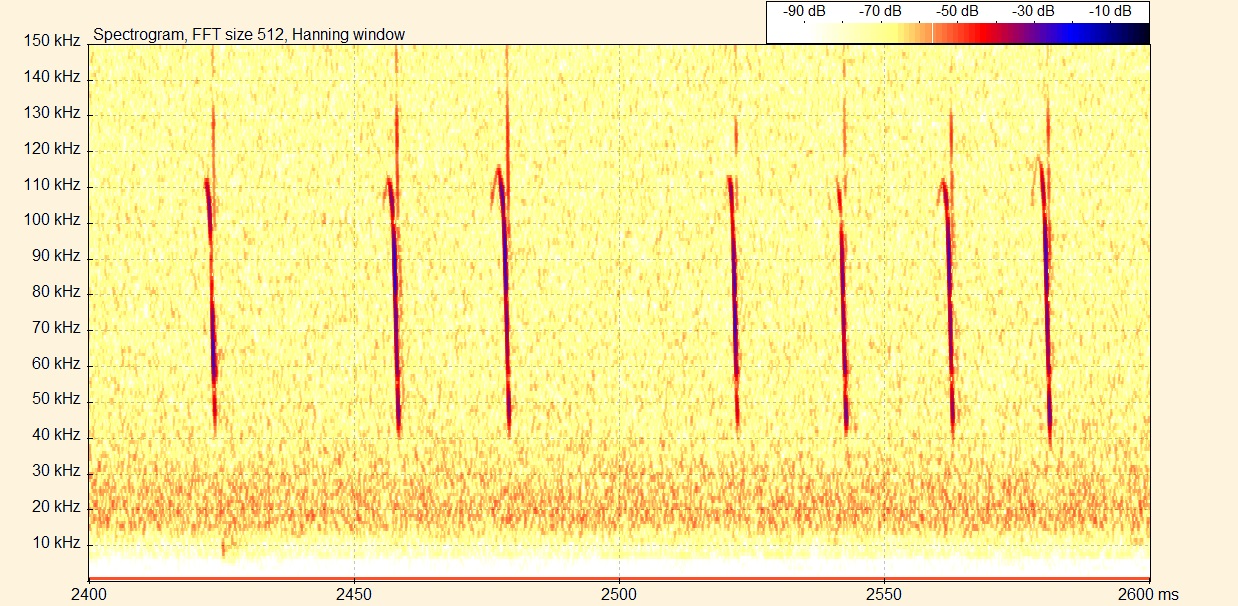Phoniscus papuensis PHPA
Former Kerivoula papuensis
Steep calls, starting around 120 kHz; there is also a prominent 2:nd harmonic that effectively produces pulses near 200 kHz.
This is a 2-seconds recording showing a bat in search phase and active hunting. Note the frequency scale; calls (2nd harmonics) passes the 150 kHz line.

PpapM00446, 140106 03:54:06, Upper Coopers Creek, Google Earth
A good recording shows “start tails” at 110 – 120 kHz. I have found these on some recordings but I don’t know how typical they are. This bat has very short intervals even when in search phase and don’t decrease the frequency when entering the feeding buzz phase.
See: “Rainforest bats maximize bandwidth and repetition rate of echolocation calls as they approach prey”

The Golden-tipped Bat will fly up the web of an orb-weaving spider and use its echolocation capabilities to determine which side of the web the spider is on. It will then fly to the spider’s side of the web, opening its mouth wide to pluck the spider from the web. – See more at: Australian Wildlife Conservancy.